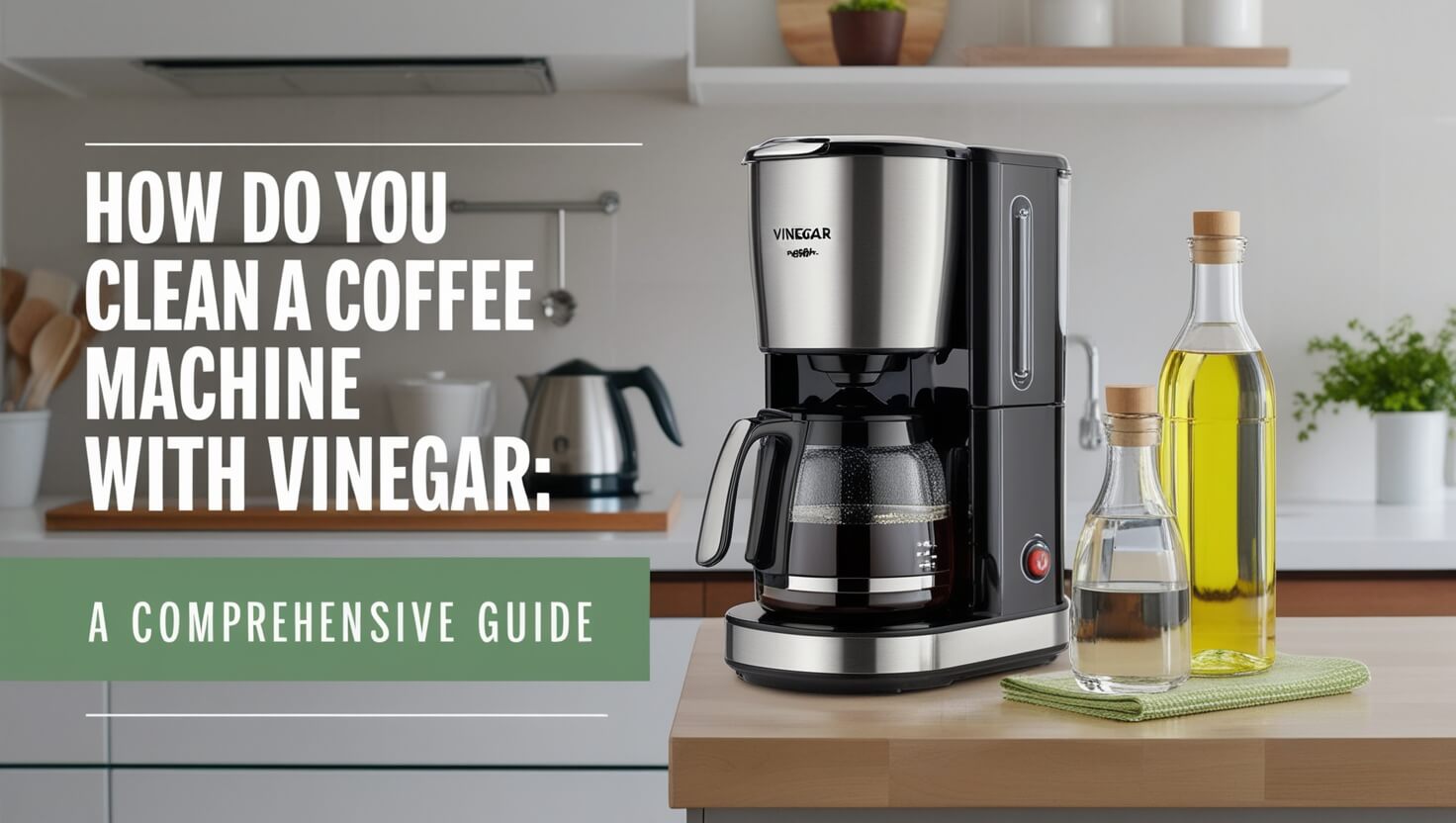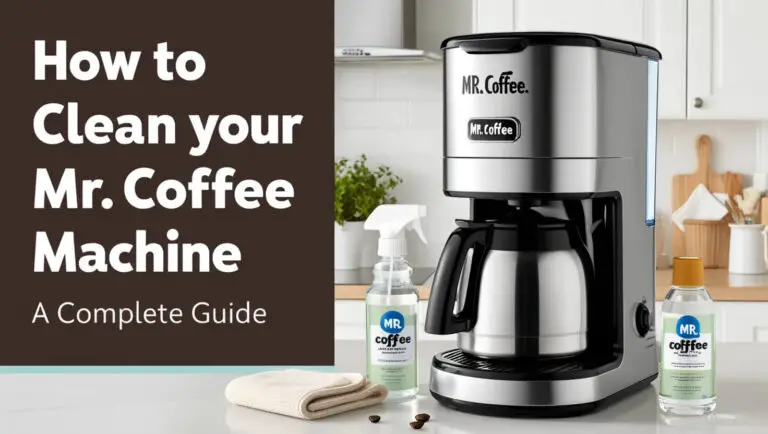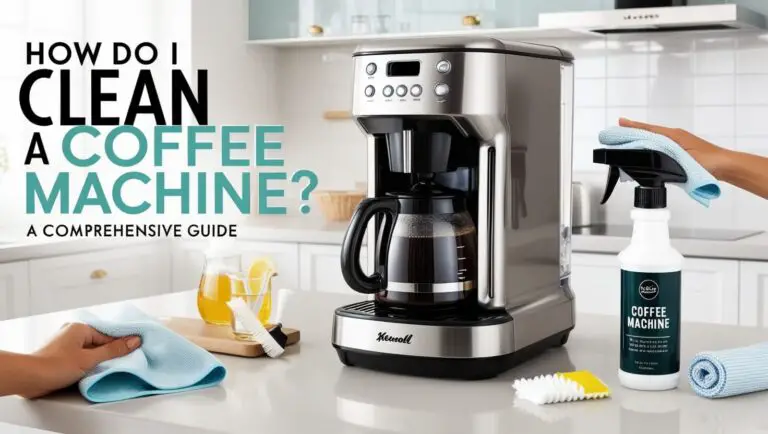How Do You Clean A Coffee Machine With Vinegar?

Keeping your coffee machine in top-notch condition is essential for brewing the perfect cup of coffee every time. Over time, mineral deposits, coffee residue, and even bacteria can build up inside your machine, affecting the taste, quality, and performance of your beloved coffee maker.
In this comprehensive guide, we’ll explore the power of using vinegar to clean your coffee machine and share step-by-step instructions to revive your appliance. By the end, you’ll be equipped with the knowledge to maintain a spotless coffee maker and enjoy a better tasting cup of coffee.
Understanding the Benefits of Cleaning with Vinegar
Why Vinegar is an Effective Cleaning Agent
Vinegar is a natural, non-toxic cleaning agent that can work wonders on your coffee machine. The acidity in vinegar helps break down and dissolve the mineral buildup, coffee residue, and even mold or bacteria that can accumulate over time. This makes vinegar an incredibly effective and affordable cleaning solution for your coffee maker.
Comparing Vinegar to Other Cleaning Methods
While there are commercial cleaning solutions available on the market, vinegar is often a more cost-effective and eco-friendly option. It’s also gentler on the delicate components of your coffee machine, making it a safer choice compared to harsher chemicals. Many coffee maker manufacturers even recommend using vinegar as the preferred cleaning method.
Step-by-Step Guide to Cleaning with Vinegar
Gathering the Necessary Supplies
To clean your coffee machine with vinegar, you’ll need the following:
- White vinegar
- Water
- A soft cloth or sponge
- Paper filters (optional)
Preparing the Vinegar Solution
The first step is to create the vinegar cleaning solution. Simply mix equal parts white vinegar and water in a clean container or directly in your coffee machine’s reservoir. The amount of solution you’ll need will depend on the size of your coffee maker, but a general guideline is to use enough to fill half the water reservoir.
Cleaning the Coffee Maker Parts
Before starting the cleaning cycle, it’s important to remove and clean the various parts of your coffee maker. This includes the carafe, brew basket, and any permanent filters. Wash these components with hot, soapy water, rinse thoroughly, and set them aside.
Running the Vinegar Cleaning Cycle
Now it’s time to get your coffee machine sparkling clean. Pour the vinegar solution into the water reservoir and run a partial brew cycle, allowing the solution to sit in the machine for 30-60 minutes before completing the cycle. This gives the vinegar time to work its magic and break down any buildup.
If you notice stubborn residue or mineral deposits, you can repeat this process, running the vinegar solution through the machine a second time. Just be sure to discard the used vinegar solution between cycles.
Rinsing and Reassembling the Machine
After the vinegar cleaning cycle(s), it’s essential to thoroughly rinse the machine with plain water. Run several full brew cycles, discarding the water each time, until you no longer detect any vinegar smell or taste.
Once the rinsing is complete, wipe down the exterior of the coffee maker with a damp cloth to remove any residual vinegar or coffee grounds. Finally, reassemble all the parts and your coffee maker is ready to brew a fresh, flavorful cup of coffee.
Maintaining a Clean Coffee Maker
Recommended Cleaning Frequency
For optimal performance and taste, it’s recommended to clean your coffee maker with vinegar at least every 3-6 months. However, if you live in an area with hard water or notice more frequent buildup, you may want to clean your machine more often, such as every 1-2 months.
Regular cleaning is key to keeping your coffee maker in top shape and ensuring your daily brew is always fresh and delicious.
Tips for Preventing Future Buildup
In addition to the periodic vinegar cleaning, there are a few other steps you can take to prevent future buildup and maintain a clean coffee machine:
- Use filtered or distilled water instead of tap water, which can contain higher mineral content.
- Clean the carafe and brew basket after each use, ensuring no wet grounds are left in the machine.
- Avoid leaving wet, used coffee grounds in the machine for extended periods.
- If your coffee maker has a self-cleaning function, use it as directed by the manufacturer.
By implementing these simple maintenance habits, you can keep your coffee maker running smoothly and minimize the need for deep cleanings.
Special Considerations for Different Coffee Maker Types
Cleaning Keurig and Single-Serve Machines
Single-serve coffee makers, such as Keurig, require a slightly different cleaning process, but you can still use the vinegar method to maintain them. Instead of running the vinegar solution through the entire machine, you’ll want to brew the vinegar solution directly into a mug 3-5 times, discarding the brewed liquid after each cup.
This targeted approach helps clean the internal components, like the needle and tubing, that are prone to buildup in single-serve machines. Be sure to follow the manufacturer’s instructions and run several plain water cycles to thoroughly rinse the system.
Addressing Stubborn Clogs or Residue
While the vinegar cleaning method is highly effective for most coffee maker maintenance, you may encounter persistent issues, such as clogged needles or difficult-to-remove residue. In these cases, you may need to try additional cleaning techniques or even contact the manufacturer for support.
Some additional strategies to address stubborn buildup include:
- Using a small brush or pipe cleaner to manually dislodge any blockages
- Soaking removable parts in a vinegar solution for an extended period
- Trying a commercial coffee maker descaling solution, following the product instructions carefully
- Consulting the manufacturer’s troubleshooting guide or reaching out to their customer support team
By being persistent and utilizing all the resources at your disposal, you can overcome even the toughest coffee machine cleaning challenges.
Frequently Asked Questions about Cleaning with Vinegar
- Can I use other types of vinegar besides white vinegar? While white vinegar is the recommended choice for cleaning coffee makers, you can also use apple cider vinegar or even lemon juice as alternatives. Keep in mind that white vinegar is the most potent and effective option, as it has a higher acidity level.
- How do I know if my coffee maker is clean enough after the vinegar cleaning? A good indication that your coffee maker is thoroughly clean is when you no longer detect any vinegar smell or taste in the brewed coffee. You should also notice that any visible mineral buildup or residue has been removed from the machine’s internal components and exterior.
- What should I do if I can still smell vinegar after the cleaning? If you still detect a lingering vinegar odor or taste after completing the cleaning process, it’s a sign that you need to run additional water-only brew cycles to fully rinse the system. Continue brewing water through the machine until the vinegar smell and flavor are completely gone.
Final Checkpoint: Enjoy a Better Tasting Cup of Coffee
By regularly cleaning your coffee machine with vinegar, you can ensure that your morning brew tastes fresh, flavorful, and free from any undesirable residue or buildup. Taking the time to maintain your coffee maker is a simple yet impactful step towards enjoying a better tasting cup of coffee every time.
Remember, clean machines brew better coffee, so make vinegar cleaning a part of your regular coffee maker maintenance routine. With this comprehensive guide, you’re now equipped with the knowledge and tools to revive your coffee machine and unlock its full potential.






